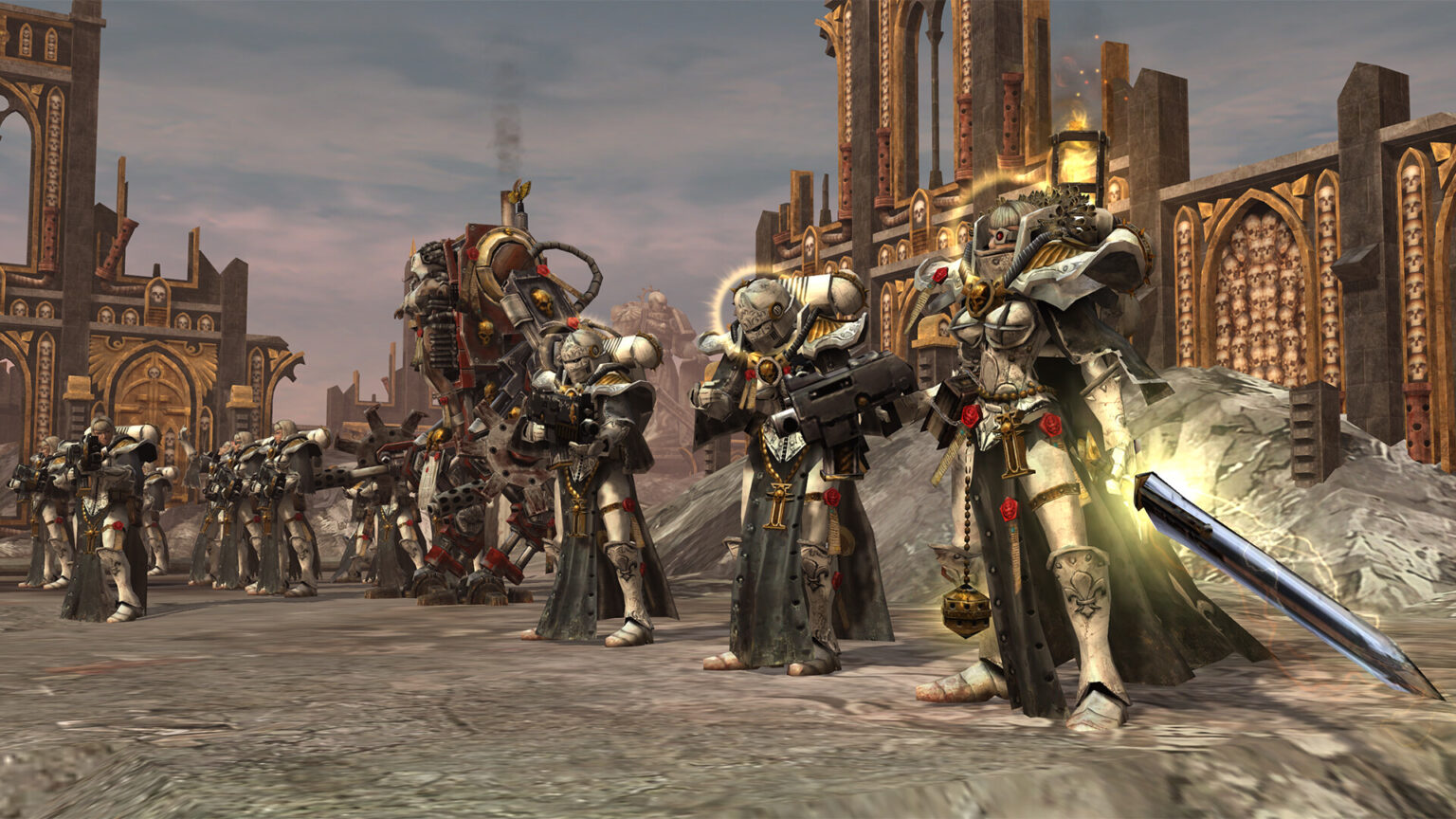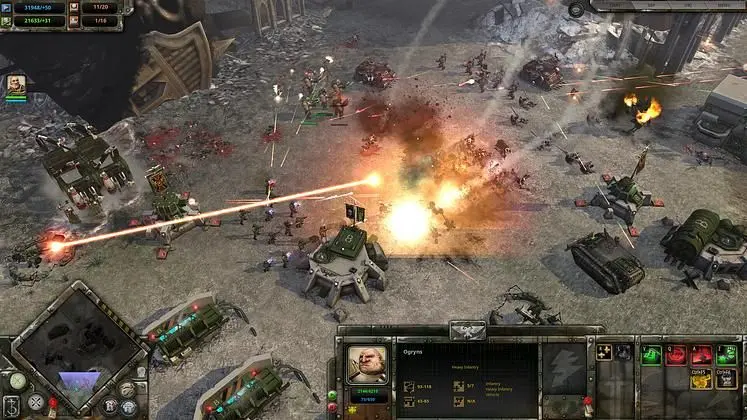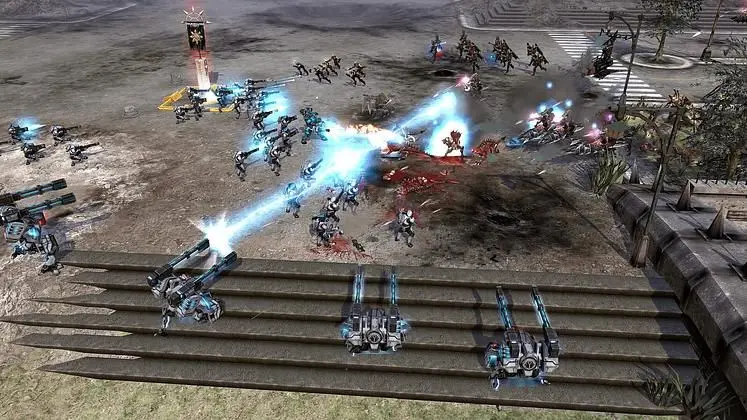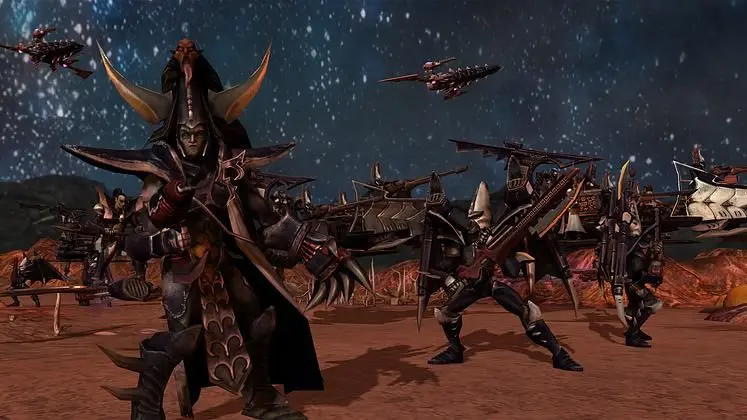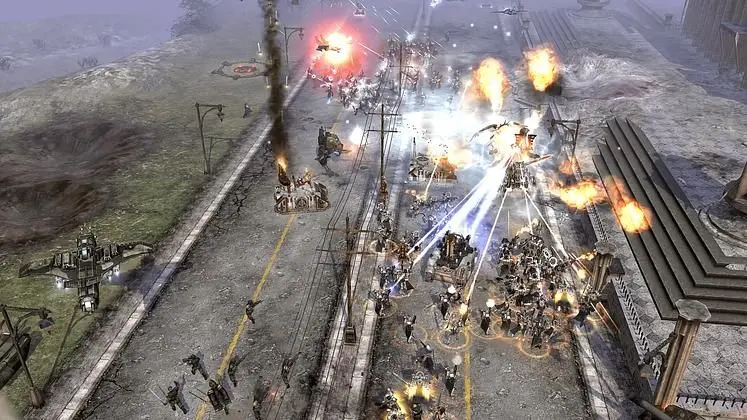Warhammer 40,000: Dawn of War – Definitive Edition is one of this summer’s hottest remasters, and we’ve been having a blast with this solid refresh of one of the best RTS games ever made. Below the shinier surface, the game’s the same, so that means console commands and cheats are available without any extra fiddling. Plus, we’ve got some tips for newbies.
Following its August 14 launch on Steam and GOG, Relic’s remaster of the RTS classic which the company originally released in 2004 has found lots of success, so we wouldn’t be really surprised to see the sequels receive a similar treatment down the line as well. For now, we’re happy to have the best WH40K RTS game ever made working on modern PCs out of the box as we wait for Dawn of War 4.
Warhammer 40,000: Dawn of War – Definitive Edition cheats and console commands
Warhammer 40,000: Dawn of War – Definitive Edition cheats and console commands can be accessed in-game and without external mods in both versions of the game (GOG and Steam).
You’ll first need to ‘unlock’ the ability to use commands and cheats. If you’re on Steam:
- Right-click the game on the library.
- Open properties, general tab, launch options box.
- Paste “-dev” (no quotation marks).
- Close and launch the game.
For the GOG version of the game:
- Navigate to where W40k_gog.exe is located.
- Right-click on W40k_gog.exe, create a shortcut.
- Right click on that shortcut, click properties, add “-dev” to Target. The full thing should look like this (differences in your folders aside): “C:\GOG Galaxy\Dawn of War Definitive Edition\W40k_gog.exe” -dev
- Start the game via the modified shortcut.
Once that’s done, you can use WH40K: Dawn of War – Definitive Edition console commands and cheats. We’ve divided them into two categories depending on what they do.
Warhammer 40,000: Dawn of War – Definitive Edition console commands
After opening up the game, press at the same time CTRL + SHIFT + ~ (Tilde). The last key might change depending on your keyboard’s region. This will bring up the classic in-game console. To activate all the commands and cheats in skirmishes, just make sure to choose “Enable Cheats” in Game Options while setting things up.
- fog_toggle → Toggle fog on/off
- shadow_toggle → Toggle shadows on/off
- taskbar_hide → Hide the taskbar/GUI
- taskbar_show → Show the taskbar/GUI
- message_hide → Hide on-screen messages
- message_show → Show on-screen messages
- quit → Exit game to Windows
- cls → Clear console window
- statgraph() → Enables stat graph overlay
- statgraph_channel(“fps”) → Shows FPS counter (top right)
- getsimrate() → Shows current game speed
- setsimrate(#) → Sets game speed, works only in skirmishes
- render_togglerainbow() → Psychedelic colors
- render_togglexray() → See-through/white textures
- render_togglewireframe() → Colored wireframe mode
- detail_toggle() → Toggle shaders
- decal_toggle() → Toggle banners & badges
- terrlod_dist(min, max) → Adjust terrain detail LOD distance
- terrlod_toggle() → Toggle terrain detail
- staticdecal_dump() → Dump static decal stats to file
- dynamicdecal_dump() → Dump dynamic decal stats to file
- ingame_stats_mouseover_toggle → Toggle mouseover stat bars
- ingame_stats_toggle → Toggle unit stat bars
- ingame_select_ui_toggle → Toggle unit selection boxes
- simvis_cameranearclip(“meters”) → Set near camera clip (hide close objects)
- simvis_camerafarclip(“meters”) → Set far camera clip (hide distant objects)
- simvis_fx_refresh → Refresh screen FX while console open
- simvis_list → Lists handler/channel usage
- simvis_toggle(“ChannelName”) → Toggle subsystem visibility
Channels linked to simvis_toggle (replace “ChannelName”):
- EnviroHandler (ambient light)
- TerrainHandler (ground)
- SkyHandlerStencil (skybox)
- NISletAnimHandler (cinematic animations)
- TerrainOverlayHandler (ground deco)
- TerrainDecoratorHandler (rubble, details)
- marker_handler
- scargroups_handler
- AnimatorHandler (unit animations/visibility)
- GhostHandler (infiltrated units)
- ShadowHandler (shadows)
- OceanHandler (water/oceans)
- FXHandler (tracers, lasers, explosions, smoke, etc.)
- LightManagerHandler (dynamic lights)
- SoundHandler (non-ambient/FX sound)
- BoundVolumeHandler (bounding boxes)
Warhammer 40,000: Dawn of War – Definitive Edition cheats
Cheats in Dawn of War are console commands, so they must be used in the exact same way: Press CTRL + SHIFT + ~ (Tilde) at the same time after setting things up outside the game. Again, make sure to choose “Enable Cheats” in Game Options while setting up a skirmish.
- cheat_revealall → Reveals the entire map
- FOW_RevealAll → Removes all the fog of war
- cheat_killself → Commit suicide (kill your entire army)
- cheat_power(#) → Add specified amount of power resource
- cheat_requisition(#) → Add specified amount of requisition resource
- sd_instant_build = 1 → Enable instant build (player + CPU) to make things even faster
- sd_instant_build = 0 → Disable instant build
On top of these cheat commands, there are hotkey cheats which just require certain key presses:
- Ctrl+F1 → +10,000 resources (power and requisition)
- Ctrl+F2 → Unlimited unit cap (beware potential instability issues)
- Ctrl+F3 → Instant build
- Ctrl+Alt+R → Removes requirements
- Ctrl+Shift+K – Destroy entity under mouse
- Ctrl+Shift+I – Make unit/building invulnerable
- Ctrl+Shift+V – Make unit/building vulnerable
- Alt+Shift+F – Toggle the fog of war (faster alternative to the aforementioned command)
Warhammer 40,000: Dawn of War – Definitive Edition tips for beginners
On top of all the console commands and cheats we’ve shared with you, we’ve got some Dawn of War – Definitive Edition tips for beginners who don’t want to cheat their way to the ultimate victory or simply want the vanilla experience as the devs originally envisioned it. These aren’t a dumbed-down tutorial section, but things we thought you should know and take advantage of.
Learn every faction even if you only want to master one of them
Dawn of War is a deeply asymmetrical RTS, which means that every faction has a bag full of different units, unique mechanics, and tricks to navigate base-building, expansion, and warfare. The different story campaigns are a fine way to learn about all the factions and how to make good use of them, yet we highly encourage playing at least a few offline skirmishes vs. the AI with each of them in order to get a real feel for how they behave in the typical matchups and maps you’ll find outside the single-player missions.
It’s tempting to focus on the Space Marines or Necrons (for example) from the get-go because you love their mechanics and/or aesthetic, but knowing all your enemies is even more important than usual in the first Dawn of War, trust us.
Turtling isn’t an option
We know, turtling is cool, but Dawn of War isn’t the kind of RTS that allows the more defensive players to build up strength before going on the offensive.
Control points and other key positions scattered all over the maps must be taken and held to improve the production of the requisition resource, so every player/team needs to hit the ground running and to expand as much as possible, even when they’re actively avoiding direct confrontations with the enemy forces until the later stages. Failure to do so results in a tanking economy, slow unit production, and absolute defeat.
Most basic infantry units are actually great
In many RTS, the starting infantry units are useful only until more advanced buildings and forces are researched. In Dawn of War, however, the bulk of each faction actually manages to stay competitive as long as you’re researching better defense, damage, abilities, and whatnot for them deep into a match.
Sure, they’ll get stomped on, ran over, and blown to bits by heavy armor and some of the biggest units in the game, but the damage-per-second can be quite impressive, which is why you shouldn’t put them aside as you get shinier toys to play with. Hit-and-run tactics with basic units in large groups (also very cheap to produce) while the enemy is distracted by the main contingent or a conflict elsewhere can win you a game.
Terrain elevation matters
Whereas most traditional RTS use the terrain elevation as an extra way to make fog of war and the units’ visual range adapt to the actual topography of the maps, Dawn of War also made it so all elevations and depressions alter the damage units take and whether it’s easier or harder to land shots.
This is briefly explained during the beginning of the original Dawn of War campaign, so it’s easy to forget about if you’re more of a vet who’s jumped straight into skirmishes and MP. Newcomers should be aware of this, but let’s just assume you wanted to rush straight into that side of the game too.
It’s very simple: If you can get your units to shoot at the enemy from above, you’ll notice better accuracy. As for gaining some extra defense against explosive attacks, depressions like valleys and craters can partially shield groups.
For the latest gaming news, follow GameWatcher on BlueSky, check out our videos on YouTube, or give us a like on Facebook. We sometimes include affiliate links in our posts, which grants us a small commission, thank you. Please support independent Games Media. ❤️

